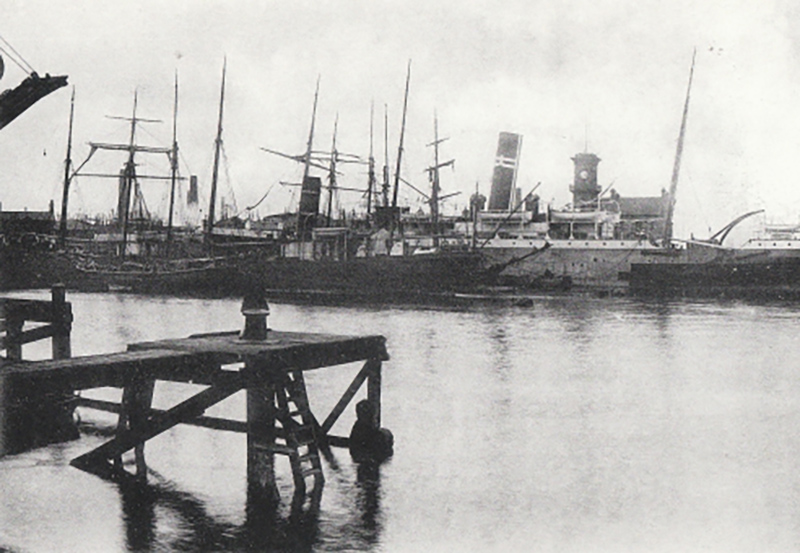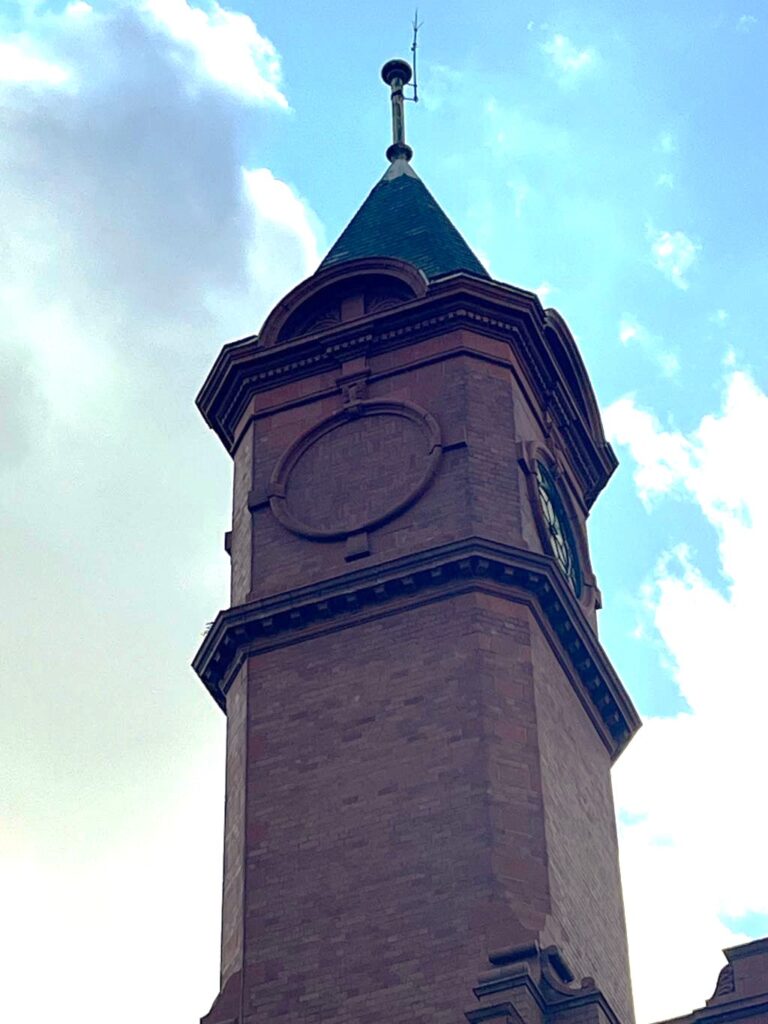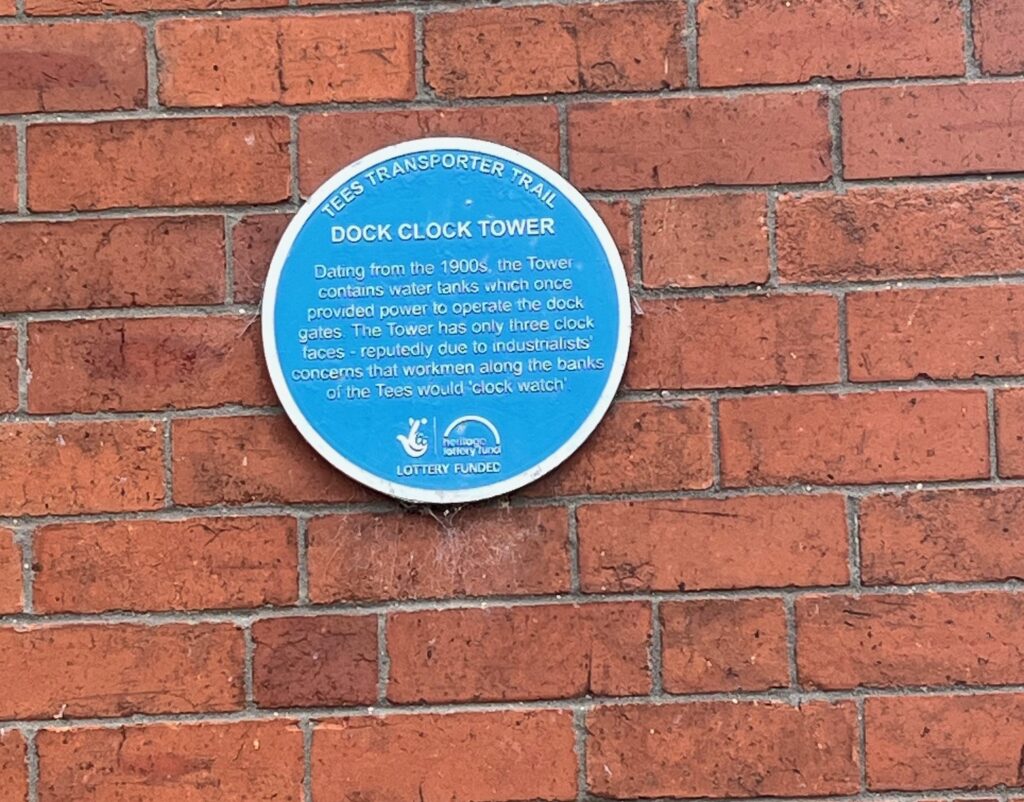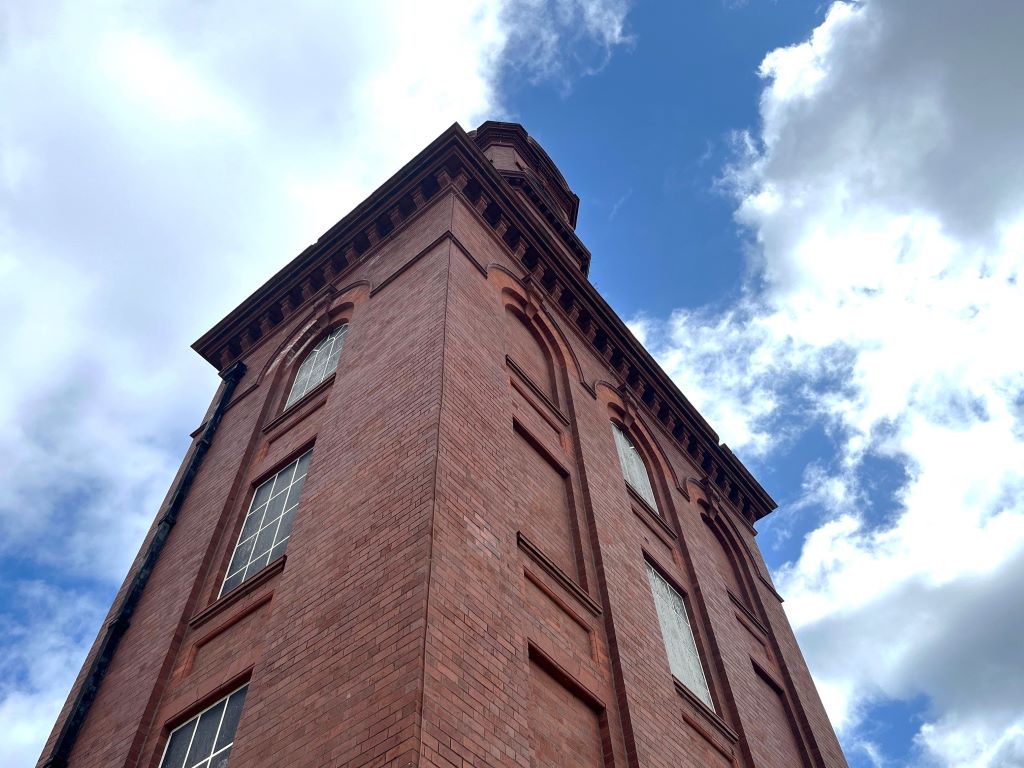Still standing tall and proud close to the former Middlesbrough Dock is the dock clocl tower which once served the dual purpose of acting as a clock for dock workers and seafarers, and as a water tower to provide pressure to operate the dock gates and cranes.
This part of Middlesbrough was once a thriving hub of activity with ships coming and going, loading and unloading.
Away from the also busy shipbuilding wharfs and slipways along the river, it provided a sheltered harbour where ships lined the quays, and cranes and railways ran up to help with the movement of cargo.
Middlesbrough Dock Tower

Middlesbrough Dock with the original dock tower visible on the right.
The dock tower is a brick structure which is standing today, somewhat isolated and lonely next to the modern Middlesbrough College and the Temenos art sculpture.
While the ships no longer use the dock, it remains protected as a Grade II* listed building.
The dock tower was built in the 1870s or 1903 (there are various references – do you know the true date?) and replaced an earlier tower from 1847.
The earlier tower was smaller and simpler, and a famous picture shows its demolition prior to the new one being built.

The famous image of the old dock tower being demolished. From Middlesbrough A Colourful Past.
The demolition took place because Middlesbrough Dock was being extended over the site of the existing structure. The replacement, built 200m away, was designed by William Bell.
It includes water tanks and fake windows around its exterior, with a clock tower at the top.

The missing clock face.
One of the most famous stories associated with the current tower is that of its clocks.
Look closer and you’ll see only three clock faces. The accepted theory is that managers at the nearby ironworks facing this side were not keen for their workers to be clock watching, and so they asked for a clock to not be added to the side of the tower facing these works.
Middlesbrough Dock Tower Today


The tower is protected thanks to its listed status, and it was restored in 2005. However, it currently serves no purpose.
It’s not currently possible to access the interior of the dock tower, but you can walk up to it and around it, and see the former dock.
Imagine just how busy this area once was, with cranes and ships’ masts all around, and the hum of activity and clanging of bells.

